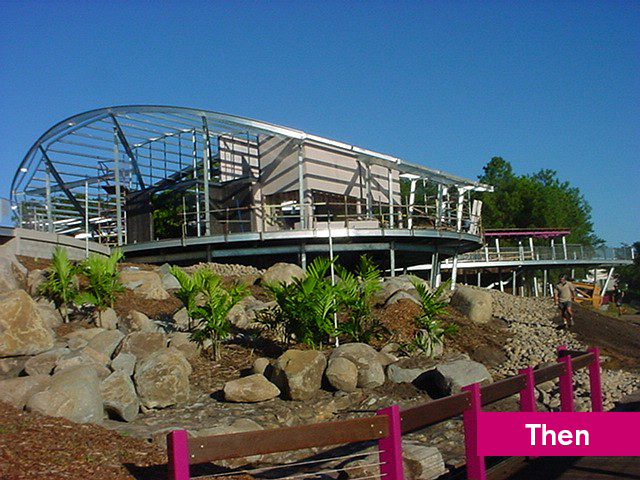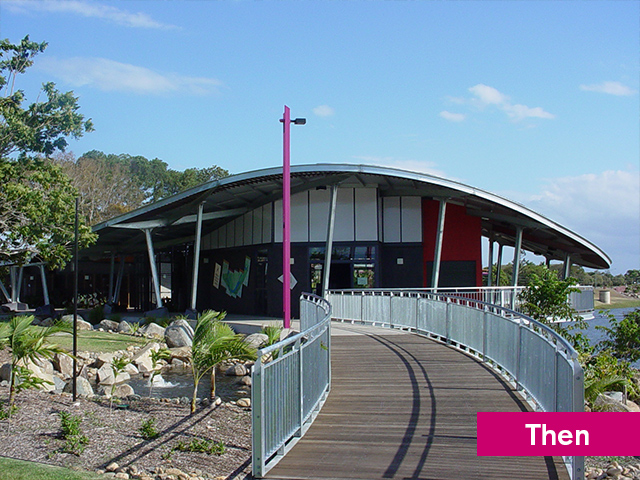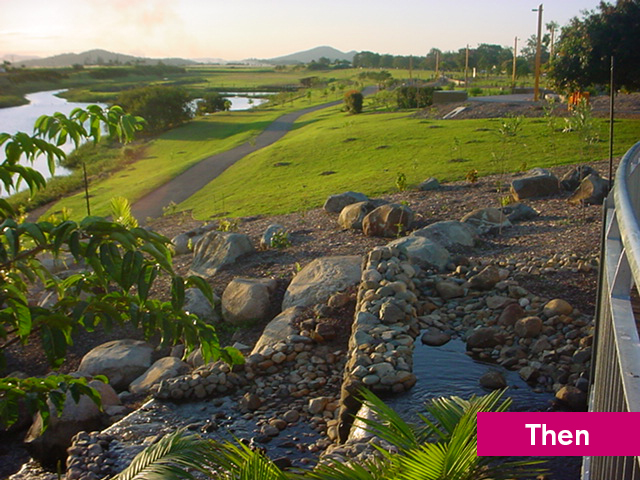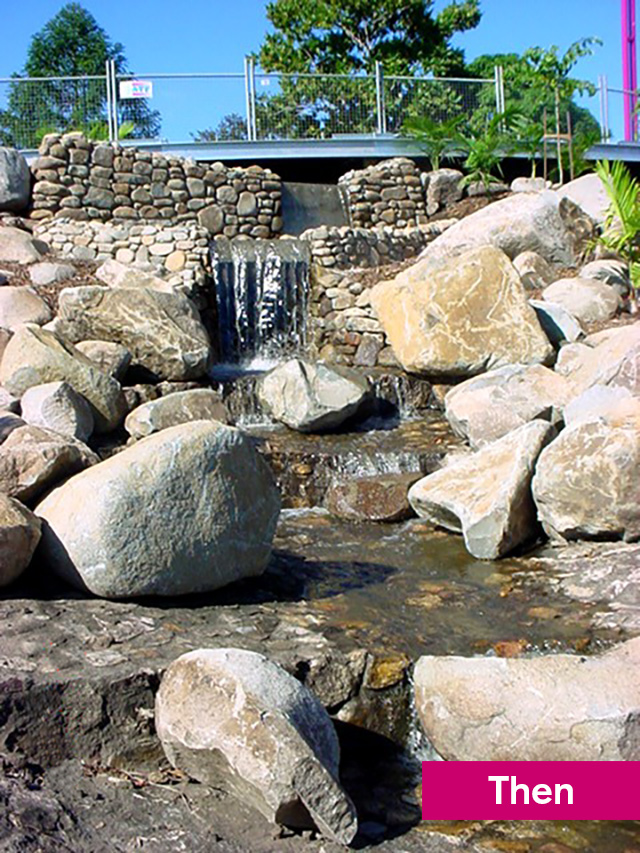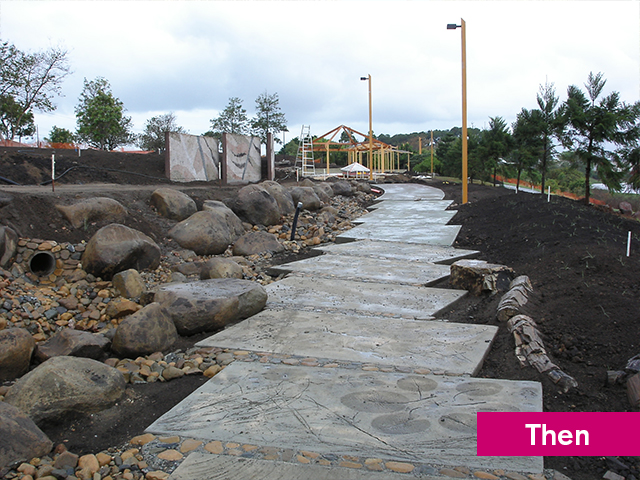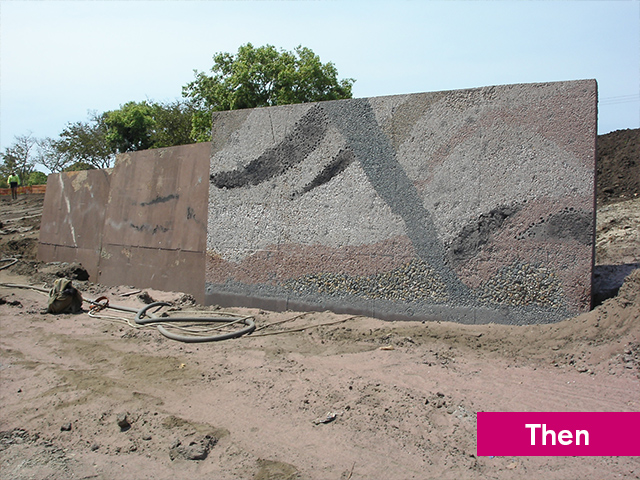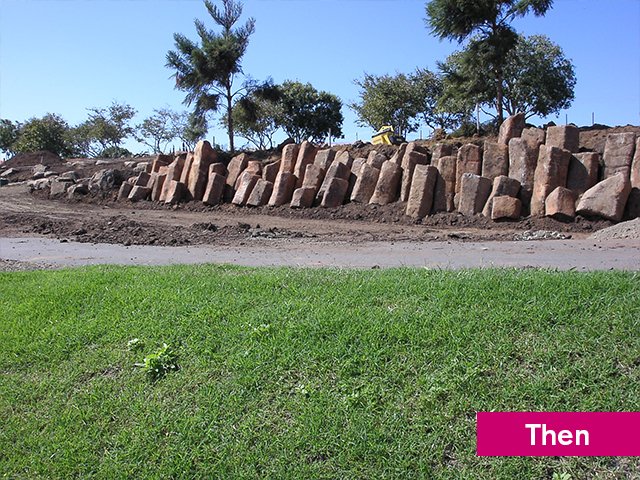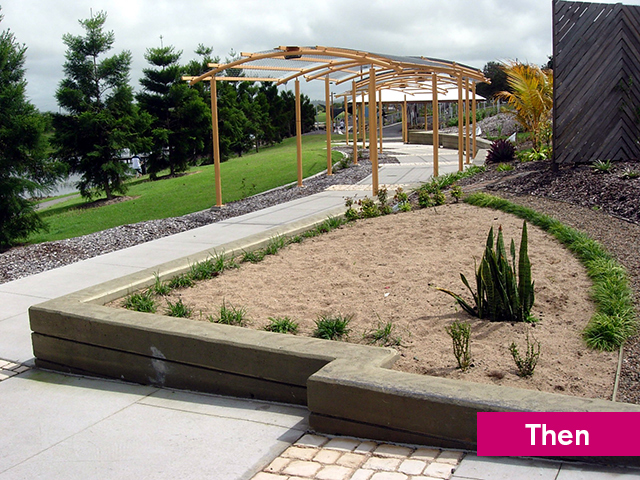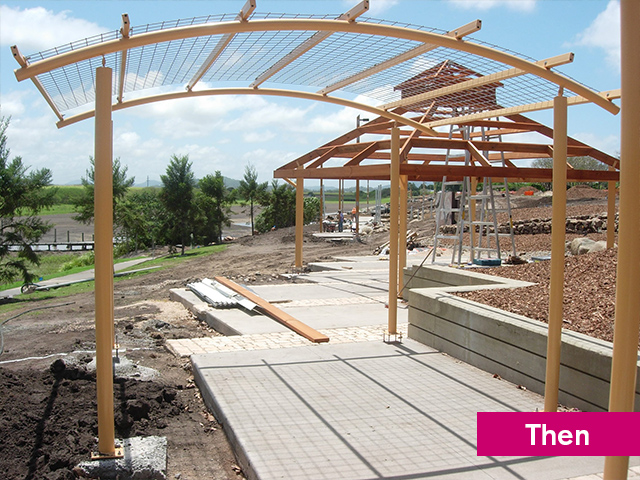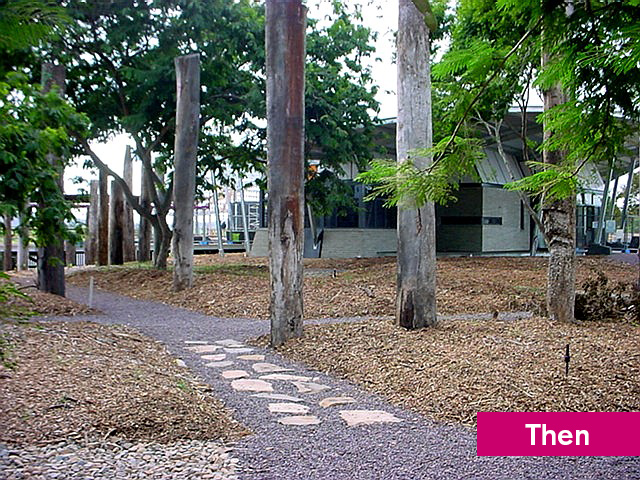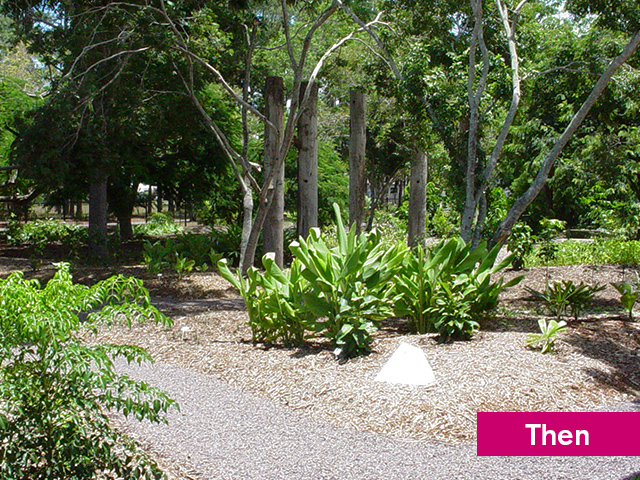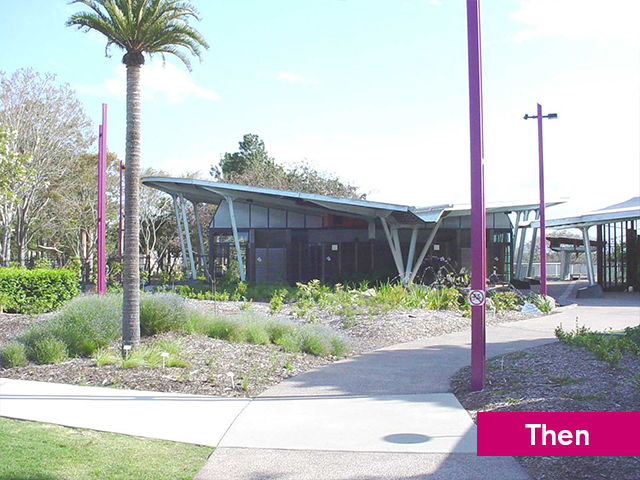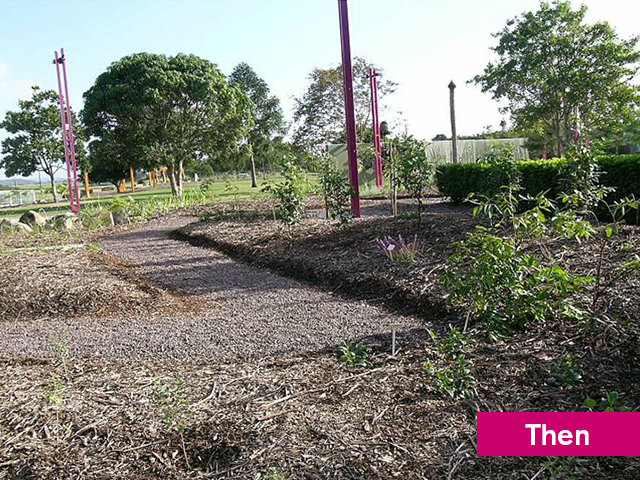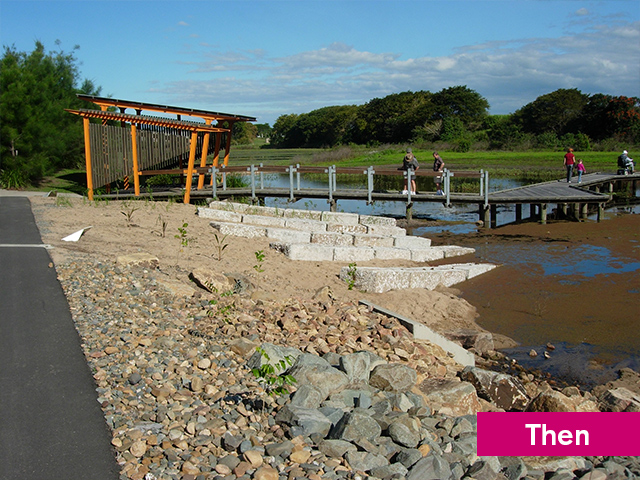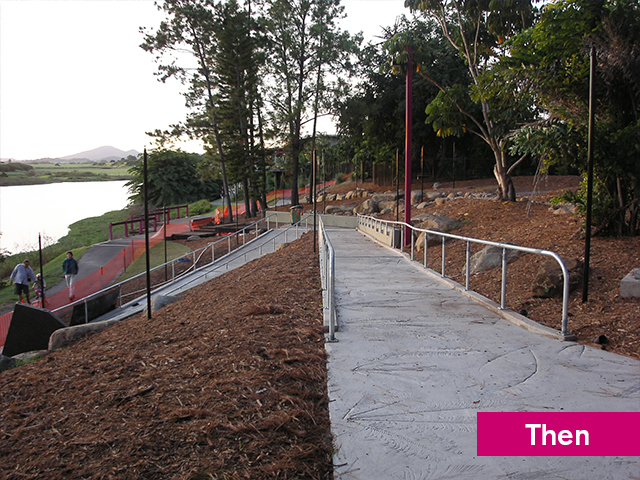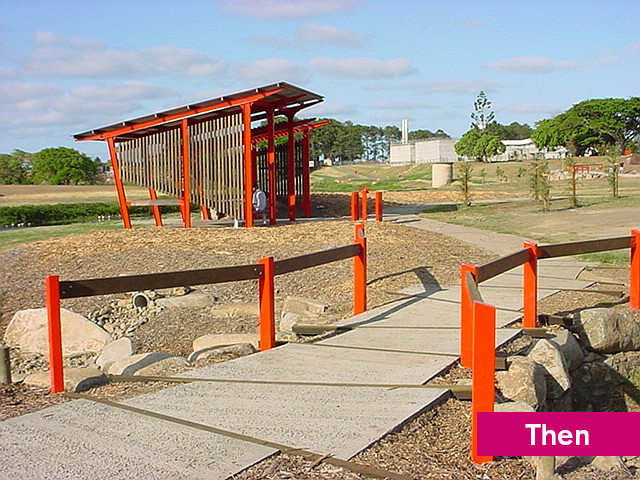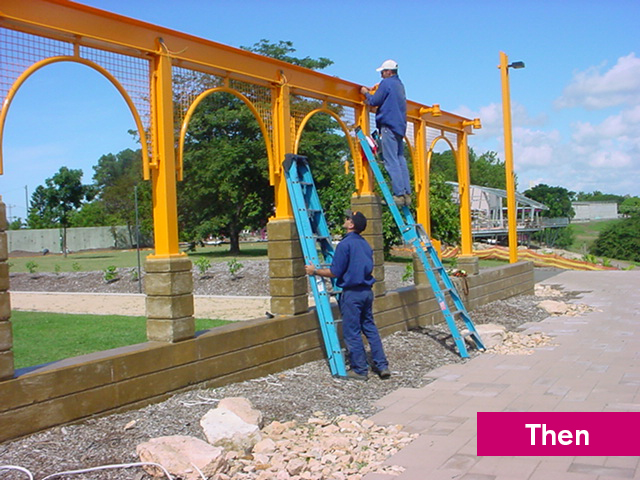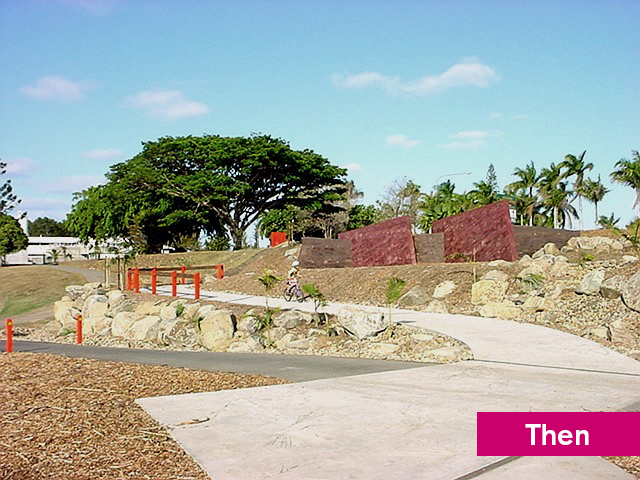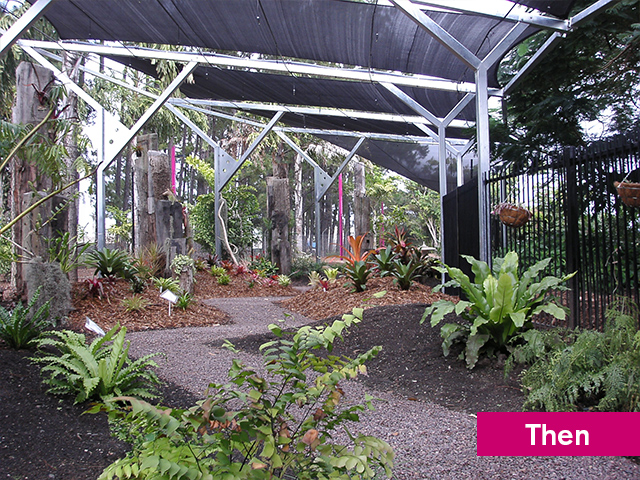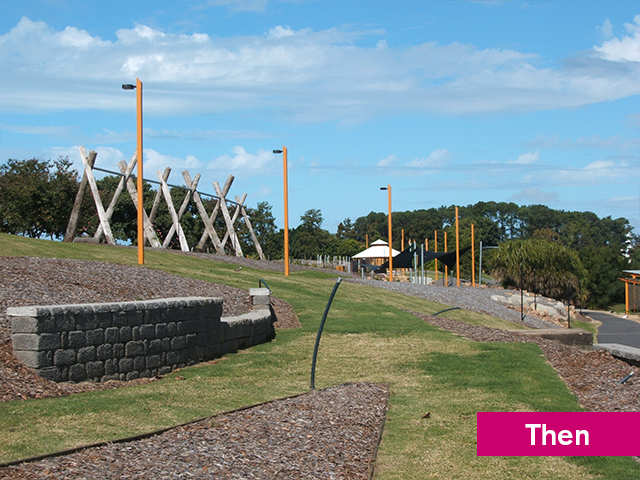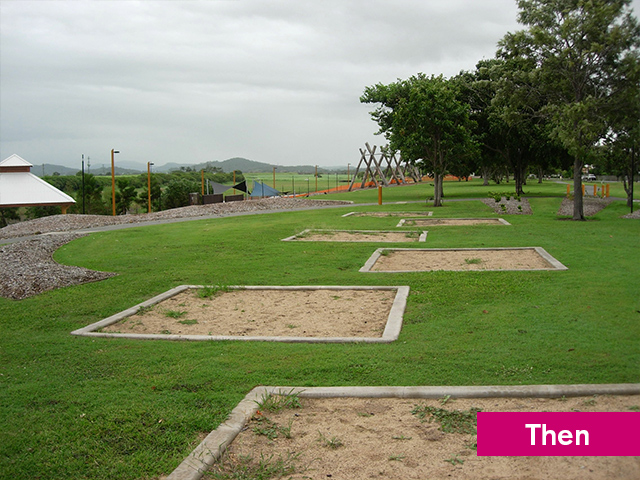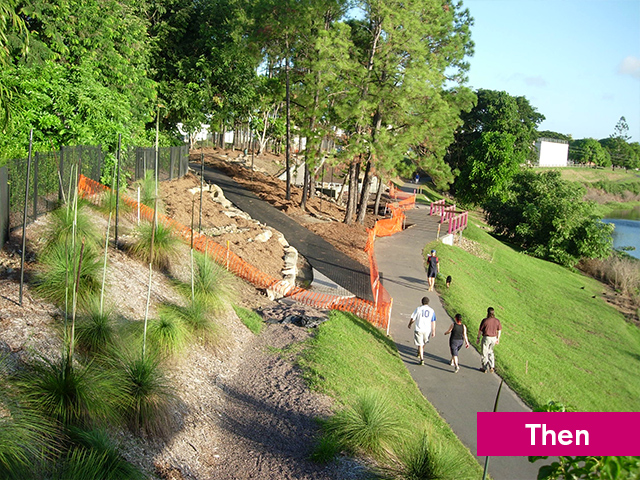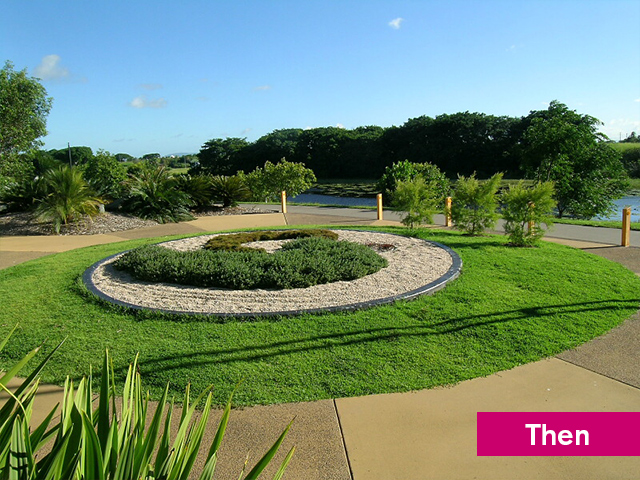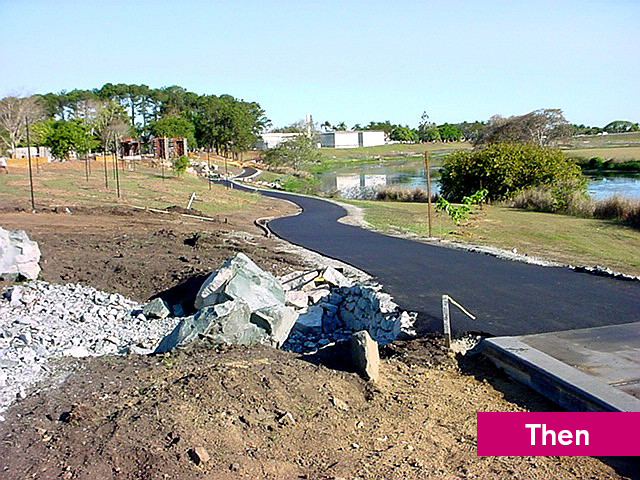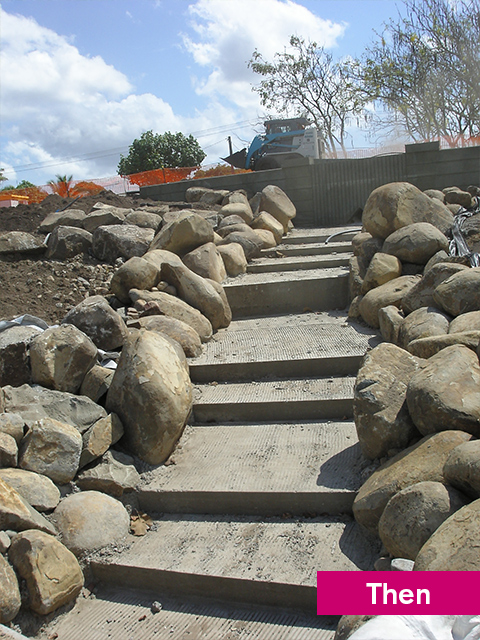Then and Now
Come on a journey with us as we look back in time to see how the Botanic Gardens have grown and flourished since its establishment in 2002-2003.
*Hover your mouse over the images to see the 'now' photos. On touch screens, hold your finger on an image to see the 'now' photo.
Café and Finch Hatton Waterway
An integral and innovative component of the Visitor Centre. Not only does it represent an important natural area of the Mackay Region, the design of the waterway creates a dramatic feature collecting rainwater from the roofs, splashing into leaping jets' fountain then flowing along the rocky waterway around the edge of the building before cascading over the edge to create our Finch Hatton Gorge waterfall. Lagoon water is recycled to add to the water movement when there is no rain, but principally for aeration.
|
Café and Finch Hatton Bridge 2002 |
Café and Finch Hatton Waterway 2005 |
|
Finch Hatton Waterway from Café deck 2003 Finch Hatton Waterfall 2003 (right) > |
Coal Garden
This plant collection interprets the evolution and development of plants through the ages highlighting the significant genera and their species.
As you walk through the Coal Garden today you will notice the fossil-like imprints on the path. This tells the story of the evolution of life from the Precambrian Era more than 4.6 billion years ago. Look and see what you can find that reminds you of the different eras.
Heritage Gardens
The Heritage Gardens pays homage to the original homestead gardens of Mackay, which have long disappeared under the pressure of progress and development. A garden full of flowering exotics, native plants and key original garden features like brick pathways, slatted timber fernery walls and vine arbours.
Tropical Shade Garden
A specialised garden for native, local native and exotic species that require shade and shelter. A major component of this collection is the recycled wharf logs from Mackay Harbour providing support to a variety of vines orchids, ferns and air plants.
Orientation Garden
The Orientation Garden is the connection between the carpark and Visitor Centre. It gives you a glimpse of the plant collections to be found within the Gardens.
More of the Botanic Gardens....
|
Eulamere Boardwalk (2005) Zig zagging across the lagoons, Eulamere Boardwalk provides a range of interactions with varying depth water and associated aquatic vegetation. It is also a great spot for watching the water birds with signage available inside the Eulamere Shelter
to |
Gymnosperm Forest (2005) Gymnosperms are non-flowering, seed bearing plants. The forest displays the fascinating evolution of plants from prehistoric times through the breakup of the Gondwana ‘supercontinent’ into the modern day world. This garden places the spotlight on the future of this species via the human impacts and potential climate change in a potentially warmer and dryer world. |
|
Kaliguil Shelter (2002) Located within the Bioregion Communities collections, the gardens surrounding the shelter represent species from the coastal rivers and waterways of the Jolimont Creek subregion. Kaliguil is an aboriginal word meaning ‘fresh water lagoon’. |
Malta Garden (2002) The Malta Garden is one of five themed gardens within the Botanic Gardens that pays homage to the cultural heritage of Mackay. Immigrants from the islands of Malta in the Mediterranean came to Australia in their thousands after Australian Federation in 1901, to seek a better life. Many settled in the then small city of Mackay primarily to work in the sugar industry, harvesting sugar cane by hand. Today, Mackay boasts the largest population of Maltese immigrants and descendants in an Australian regional centre. |
|
Sarina Proserpine Hills (2002) This collection represents the most botanically significant species of the Sarina Proserpine region with separate gardens to highlight species from the ‘lowlands’ and ‘hills’. |
The Fernery (2005) The Fernery showcases foliage plants and ferns from tropical and subtropical areas around the world. |


